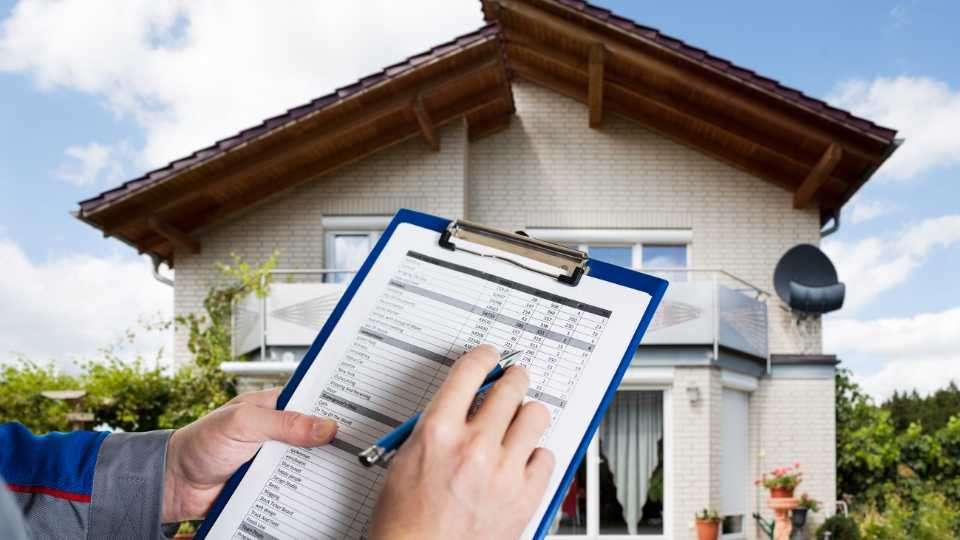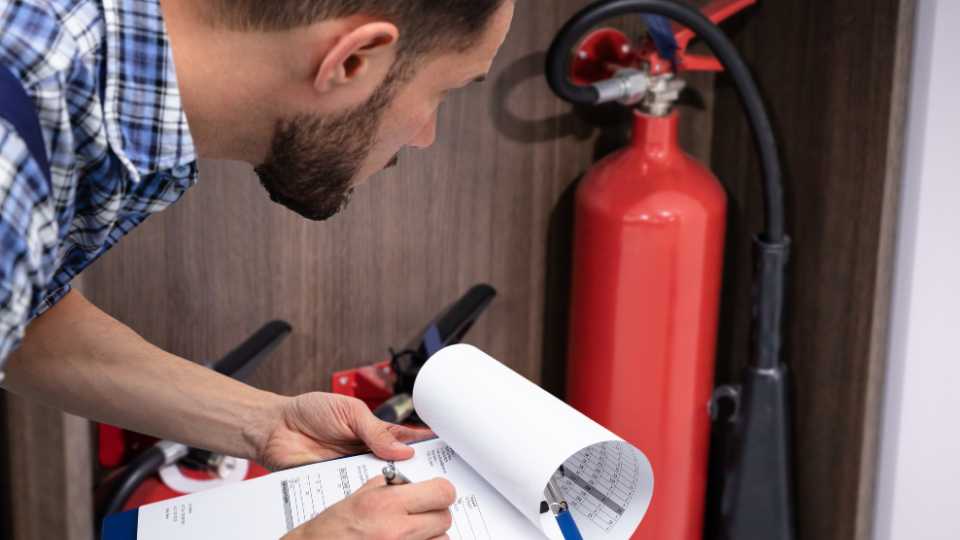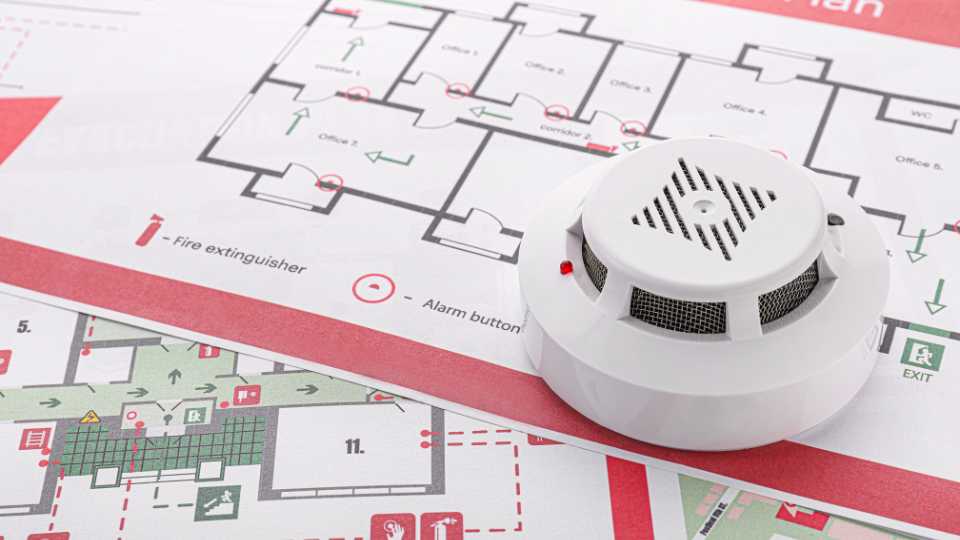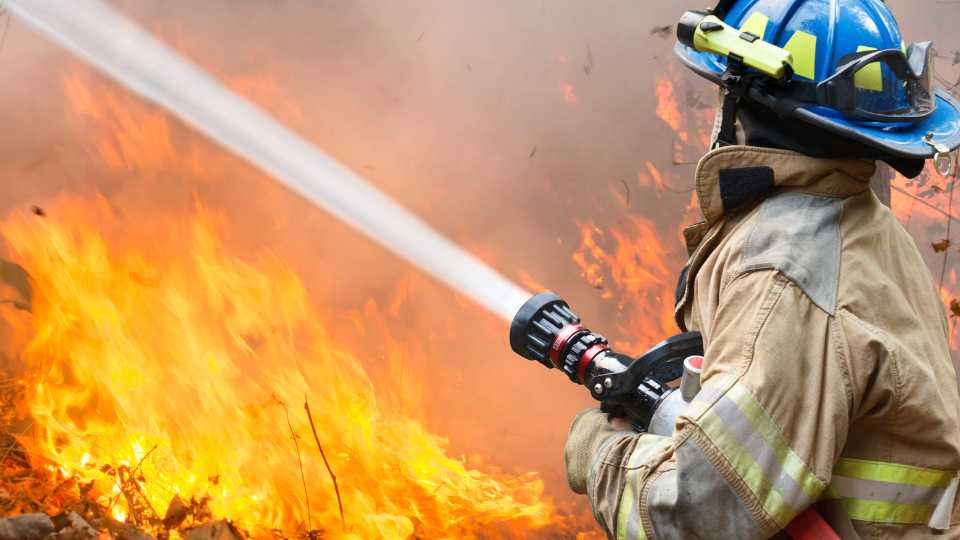How to Prepare for a Wildfire: Critical Steps for Safety and Readiness
As the climate continues to shift, the threat of wildfires looms larger than ever, impacting countless communities each year. Preparing for such an unpredictable and devastating event is not just smart—it’s essential. Understanding how to prepare for a wildfire can make a significant difference between safety and disaster for you and your loved ones. Underscored by the catastrophic January 2025 Southern California wildfires. These fires, described by the U.S. Environmental Protection Agency as “the largest wildfire hazardous materials cleanup in EPA history,” ignited under hurricane-force Santa Ana winds and extreme drought, leaving a trail of unprecedented destruction.
According to CalMatters, the blazes destroyed billions in properties—including affluent coastal neighborhoods like Pacific Palisades and Altadena—and displaced hundred of thousands residents, marking one of the costliest natural disasters in U.S. history. From creating a defensible space around your property to assembling an emergency kit, every step you take can enhance your readiness and resilience. This guide will walk you through essential steps for wildfire safety, empowering you to face potential hazards with confidence. Don’t wait for the smoke to rise; learn how to safeguard your home and family today. After all, preparedness is the best offense against nature’s fury.
Understanding Wildfires: Causes and Risks
Wildfires are unplanned, uncontrolled fires that spread rapidly across vegetation and forested areas, often with devastating results. They can be ignited by natural occurrences, such as lightning strikes, or human activities, including unattended campfires, discarded cigarettes, and arson. With the increasing frequency and intensity of heatwaves and prolonged dry spells due to climate change, the conditions conducive to wildfires have become more prevalent. These fires pose significant threats to life, property, and the environment, making it crucial to understand their causes and risks to effectively prepare and respond.
The primary risk factors for wildfires include prolonged drought, high temperatures, strong winds, and abundant dry vegetation. These elements create a perfect storm for fires to ignite and spread rapidly, overwhelming communities and ecosystems. Understanding these factors helps in assessing the vulnerability of a specific area to wildfires and taking appropriate preventive measures. Additionally, recognizing the potential ignition sources around your property can help mitigate the risk of accidental fires.
Human activity is a significant contributor to wildfire risk. Activities such as agricultural burning, improper disposal of smoking materials, and the use of fireworks or equipment that produces sparks can easily ignite a fire. In fact, studies have shown that nearly 85% of wildfires in the United States are caused by human actions. This statistic underscores the importance of public education and responsible behavior to reduce the occurrence of wildfires. By understanding these causes and risks, individuals and communities can make informed decisions to enhance their safety and preparedness.
Assessing Your Home and Property for Wildfire Vulnerability
Assessing your home and property for wildfire vulnerability is a critical step in wildfire preparedness. Begin by evaluating the materials used in the construction of your home. Structures built with combustible materials, such as wood siding, decks, and roofs, are more susceptible to catching fire. Consider retrofitting your home with fire-resistant materials, such as metal roofs, fire-retardant siding, and tempered glass windows, to enhance its resilience to wildfires.
Next, examine the landscaping around your property. Vegetation that is too close to your home can serve as fuel for an approaching wildfire. Create a defensible space by clearing away dead plants, leaves, and other flammable debris. Trim trees and shrubs regularly to maintain a safe distance from your home, and remove any branches that hang over your roof or near chimneys. This buffer zone can significantly reduce the risk of fire spreading to your home and provide firefighters with a safer environment to combat the blaze.

Evaluate the accessibility of your property for emergency responders. Ensure that your driveway is wide enough to accommodate firefighting equipment and that there are no obstacles that could hinder their access. Clearly mark your address with reflective numbers that are visible from the street, both day and night. This can save valuable time in the event of an emergency, as responders will be able to locate your home quickly and efficiently. By thoroughly assessing your home and property for wildfire vulnerability, you can identify potential hazards and take proactive measures to mitigate the risk.
Creating a Wildfire Emergency Plan
Having a well-thought-out wildfire emergency plan is essential for ensuring the safety of you and your loved ones. Start by establishing a communication strategy. Designate a primary and secondary contact person who lives outside the affected area. This allows family members to check in and share their whereabouts and status. Ensure everyone has these contacts stored in their phones and written down in case of power outages. Discuss how you will communicate if cell service is disrupted, such as using social media or predetermined meeting points.
Develop an evacuation plan that includes multiple routes out of your neighborhood and community. Familiarize yourself with these routes and practice driving them under different conditions, including at night and in heavy traffic. Identify a safe meeting place outside the evacuation zone where all family members can reunite. Make sure everyone knows the location and how to get there. Additionally, plan for the needs of pets and livestock, including transportation and temporary housing.
Incorporate a plan for individuals with special needs, such as elderly family members, those with disabilities, or young children. Assign specific responsibilities to each family member, such as who will assist with gathering essential items, who will help with pets, and who will ensure everyone is accounted for. Review and practice your emergency plan regularly to ensure everyone is familiar with their roles and actions. By creating a comprehensive wildfire emergency plan, you can enhance your preparedness and ensure a coordinated, efficient response when time is of the essence.
How to Prepare for a Wildfire: Creating an Emergency Plan
An emergency kit is a crucial component of your wildfire preparedness strategy. It should be packed with essential items that will sustain you and your family for at least 72 hours during an evacuation. Start with the basics, such as water and non-perishable food. Aim for one gallon of water per person per day and include items that are easy to prepare and consume without cooking. Don’t forget utensils, a can opener, and any special dietary needs.
Your emergency kit should also include personal hygiene items such as soap, hand sanitizer, toothbrushes, toothpaste, and moist towelettes. Pack a change of clothes for each family member, including sturdy shoes and weather-appropriate outerwear. Include blankets, sleeping bags, and a first aid kit with essential medications, bandages, antiseptics, and any prescription medications. Don’t forget to add a flashlight with extra batteries, a whistle to signal for help, and a battery-powered or hand-crank radio to stay informed about the situation.

Important documents should be part of your emergency kit as well. Store copies of identification, insurance policies, bank records, and other critical documents in a waterproof container. Include a list of emergency contacts, local maps, and any necessary pet supplies. Finally, consider adding items for entertainment, such as books, games, or a deck of cards, to help pass the time during an evacuation. By preparing a comprehensive emergency kit, you ensure that you have the necessary supplies to sustain yourself and your family during the uncertainty of a wildfire evacuation.
Key Steps for Hardening Your Home Against Wildfires
Hardening your home against wildfires involves making strategic modifications to your property to reduce its susceptibility to fire. One of the most effective steps is to use fire-resistant building materials. Replace wood shingles and siding with non-combustible materials such as metal, stucco, or concrete. Install dual-pane or tempered glass windows to better withstand the intense heat of a wildfire, and seal any gaps or openings where embers could enter your home.
Another critical aspect of home hardening is creating a defensible space. This involves clearing vegetation and combustible materials from around your home to create a buffer zone that can slow the spread of fire. Maintain a minimum of 30 feet of defensible space around your home, and extend this zone to 100 feet if you live in a high-risk area. Remove dead plants, dry leaves, and pine needles from your yard, roof, and gutters. Trim tree branches so that they are at least 10 feet away from your roof and other trees.
Installing ember-resistant vents and screens can also help protect your home from wildfires. These features prevent burning embers from entering your home through vents, eaves, and other openings. Additionally, consider installing a metal mesh screen around your deck or porch to prevent embers from igniting the area underneath. By taking these proactive measures, you can significantly enhance your home’s resilience to wildfires and reduce the risk of fire-related damage.
Pre-Wildfire Home Maintenance Tips to Reduce Wildfire Risk
Landscaping plays a crucial role in reducing wildfire risk and protecting your property. Start by selecting fire-resistant plants that are less likely to ignite and spread flames. These plants typically have high moisture content, low resin or oil content, and a compact growth habit. Examples include succulents, certain types of perennials, and deciduous trees. Avoid planting highly flammable vegetation, such as junipers, eucalyptus, and pine trees, near your home.
Create a defensible space by dividing your landscape into zones based on their proximity to your home. The area closest to your home, known as the “home ignition zone,” should be kept well-maintained and free of combustible materials. Use non-flammable ground covers such as gravel, stone, or bare soil in this zone. Keep plants well-watered and pruned, and remove dead or dried vegetation regularly. Mulch can be used sparingly, but avoid placing it directly against the house.
In the intermediate zone, which extends from 30 to 100 feet from your home, focus on creating fuel breaks and reducing the density of trees and shrubs. Prune lower branches to prevent the spread of ground fires to the canopy and remove any dead or diseased plants. Maintain a separation between tree canopies to prevent fire from traveling between them. Incorporate hardscape features such as patios, walkways, and retaining walls to create additional barriers to the spread of fire. By implementing these landscaping tips, you can create a safer environment that reduces the risk of wildfire damage to your property.
Staying Informed: Monitoring Fire Alerts and Weather Conditions
Staying informed about fire alerts and weather conditions is essential for timely and effective wildfire preparedness. There are several resources available to help you monitor fire activity and weather forecasts. Sign up for local emergency notification systems, such as reverse 911 calls, text alerts, or email notifications, offered by your county or city. These systems provide real-time updates on wildfire activity, evacuation orders, and other critical information.
In addition to local alerts, use weather apps and websites to stay informed about fire weather conditions. The National Weather Service (NWS) and other meteorological agencies provide detailed forecasts, including information on temperature, humidity, wind speed, and red flag warnings. Red flag warnings indicate that critical fire weather conditions are either occurring or expected to occur shortly. These warnings are a signal to be extra vigilant and prepared for the possibility of wildfires.
Social media and news outlets are also valuable sources of information during wildfire season. Follow the social media accounts of local fire departments, emergency management agencies, and weather services for the latest updates and information. Keep a battery-powered or hand-crank radio on hand to stay informed in case of power outages. By actively monitoring fire alerts and weather conditions, you can ensure that you are always aware of potential threats and take timely action to protect yourself and your property.
Community Essential Supplies for Wildfire Readiness
Community resources and support play a vital role in wildfire preparedness and recovery. Many communities offer resources to help residents prepare for and respond to wildfires. Local fire departments and emergency management agencies often provide educational programs, workshops, and informational materials on wildfire safety. Take advantage of these resources to learn about best practices for protecting your home and family.
Participate in community wildfire preparedness initiatives, such as Firewise USA, which helps communities work together to reduce wildfire risk. Firewise USA provides resources and support for creating defensible spaces, hardening homes, and developing emergency plans. By participating in these programs, you can collaborate with your neighbors to create a safer environment for everyone.

In the event of a wildfire, community resources such as evacuation shelters, food banks, and support services can provide essential assistance. Know the locations of local shelters and have a plan for how you will get there if you need to evacuate. Connect with local organizations that offer support services, such as the American Red Cross, which can provide emergency shelter, food, and medical care. By leveraging community resources and support, you can enhance your preparedness and resilience to wildfires.
What to Do During a Wildfire: Safety Tips and Evacuation Procedures
During a wildfire, your safety and the safety of your loved ones are the top priorities. If an evacuation order is issued, leave immediately. Do not wait until the last minute, as conditions can change rapidly, and delaying your departure could put you in danger. Follow the evacuation routes provided by emergency officials and avoid shortcuts, which may be blocked by fire or other hazards.
As you evacuate, take your emergency kit, important documents, and any necessary medications with you. Wear protective clothing, such as long pants, long sleeves, sturdy shoes, and a face covering to protect yourself from smoke and embers. Close all windows and doors in your home before leaving to reduce the likelihood of embers entering and igniting your home. Turn off gas, water, and electricity if instructed to do so by authorities.
If you are unable to evacuate, take refuge in a room with the least amount of windows and doors, such as a bathroom or basement. Keep all windows and doors closed and stay low to the ground to avoid smoke inhalation. Use a wet cloth to cover your nose and mouth, and monitor emergency alerts for updates on the fire’s progress and evacuation orders. By following these safety tips and evacuation procedures, you can protect yourself and your loved ones during a wildfire.
Post-Wildfire Recovery: Steps to Take After the Danger Has Passed
Recovering from a wildfire can be a challenging and emotional process. Once the immediate danger has passed and it is safe to return to your property, begin by assessing the damage. Take photos and document any damage to your home and belongings for insurance purposes. Contact your insurance company to file a claim and provide them with the necessary documentation.
Be cautious when returning to your property, as there may be hidden dangers such as downed power lines, unstable structures, and hazardous materials. Wear protective clothing, including gloves and a mask, to protect yourself from ash and debris. Avoid drinking or using tap water until authorities have confirmed that it is safe to do so, as wildfires can contaminate water supplies.
Seek support from community resources and organizations that offer assistance to wildfire survivors. These may include emergency shelters, food banks, counseling services, and financial aid programs. Participate in community recovery efforts and support your neighbors as they rebuild. By taking these steps, you can navigate the post-wildfire recovery process and begin the journey to rebuilding your life and community.
Conclusion:
Every step we take to prepare, protect, and empower families ripples outward, ensuring children grow up in environments where they can thrive, not just endure. The stories of resilience we’ve shared here mirror the heart of our mission: to stand with vulnerable communities, turning fear into action and uncertainty into hope.
But we can’t do this alone. You are the spark that fuels this work. Whether it’s teaching families how to build emergency kits, advocating for climate-resilient policies, or rebuilding after disaster strikes, your support makes these lifelines possible. If this article moved you, consider donating today. Even a small gift can help us equip communities with the tools they need to face wildfires—and other crises—with courage.
Thank you for reading, for caring, and for being part of this journey. If you’d like to learn more about how we’re tackling interconnected challenges like hunger, malnutrition, and disaster resilience, explore our other stories:
- Hunger & Poverty: Breaking the Cycle
- The Hidden Causes of Malnutrition
- Building Careers in Disaster Management
Together, we’re not just preparing for disasters—we’re planting seeds of safety, health, and opportunity. For questions, collaborations, or to share your story, reach out to us here. Let’s keep building a world where every child—and every community—can rise stronger.
With gratitude,
The Francis Lubega Children’s Foundation Team





